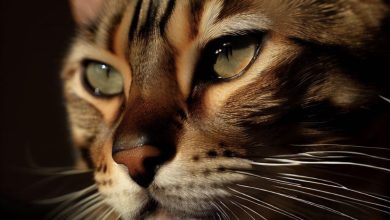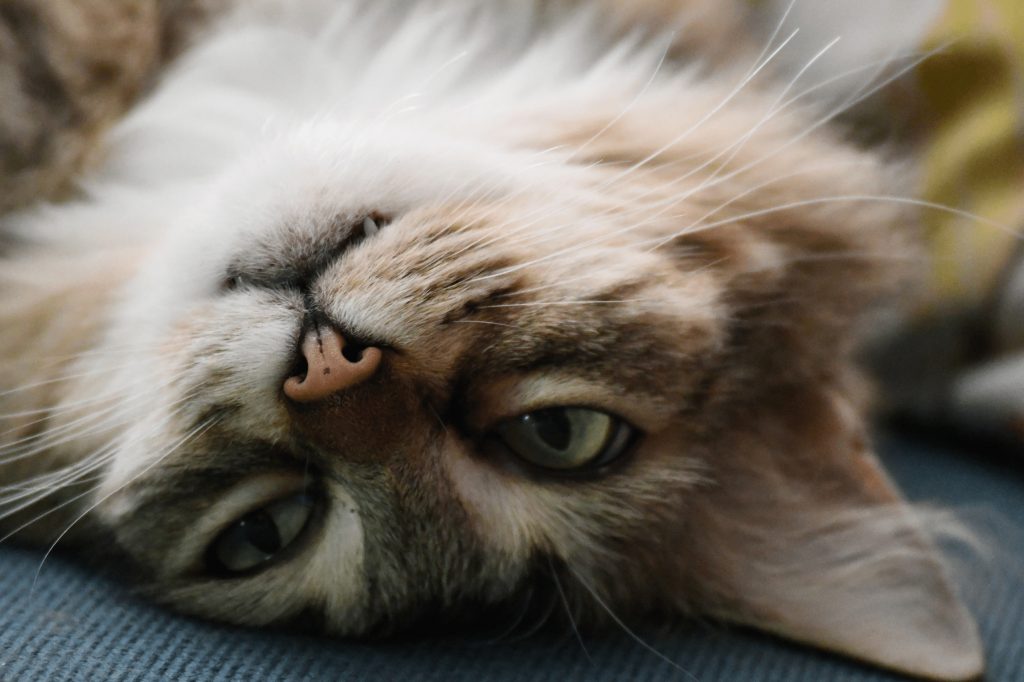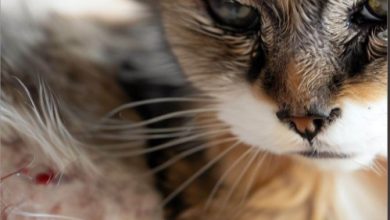Why Is My Cat So Soft?

Ever wondered why your adorable feline friend has fur so soft you can’t resist petting it? Well, get ready to uncover the secrets behind your cat’s irresistibly velvety coat. From breed-specific traits to genetics and proper grooming techniques, there’s a whole world of factors that contribute to your cat’s luxurious fur. So, let’s dive in and explore the fascinating science behind why your cat’s fur is so soft. SULLPET
Why Is My Cat So Soft? Your cat’s softness is a result of its unique hair structure, including layers of fur and the secretion of natural oils. This combination creates a plush and velvety texture that feels incredibly soft to the touch. Petting your cat’s soft fur not only brings you joy but also has a relaxing effect, releasing endorphins and reducing stress. So, embrace the calm and enjoy the art of petting your furry friend to experience the soothing power of their softness.
Cat Breed with the Softest Fur
Some cat breeds are simply renowned for their incredibly soft fur. Picture those beautiful Persian cats, Ragdolls, or Maine Coons—they have long, silky, and oh-so-plush coats that feel like heaven to touch. It’s all thanks to their genetic makeup and unique hair structure. These breeds have dense undercoats and fine guard hairs that work together to create that luxurious texture you love.
When you run your hands through their fur, it’s like sinking your fingers into a cloud of softness. However, it’s important to note that every cat is special and has its own unique texture, even within the same breed. So, don’t worry if your kitty’s fur doesn’t match the “softest fur” stereotype. They’re still incredibly lovable!
Also Read: Are Orange Cats Dumb? Feline Intelligence
Factors Affecting Cat Fur Softness
First and foremost, genetics play a significant role. Just like humans inherit traits from their parents, cats inherit genes that determine their fur’s length, thickness, and texture. So, if your furry companion comes from a line of soft-coated ancestors, chances are their fur will be soft too.
But genetics is not the only factor at play here. Your cat’s overall health and well-being also contribute to its fur’s softness. A balanced diet rich in essential nutrients, such as omega-3 fatty acids, helps maintain healthy skin and promotes soft fur. So, make sure you’re feeding your feline friend high-quality cat food that supports their skin and coat health.
In addition, regular grooming sessions are a must for maintaining soft fur. Brushing your cat not only removes loose hair and prevents matting but also stimulates natural oil production in its skin. These oils nourish the hair follicles, resulting in softer and more lustrous fur. So, grab that brush and give your kitty some extra love!
How to Maintain a Cat’s Soft Fur
Now that we understand the factors behind soft fur, let’s talk about how to maintain it. Regular grooming sessions are key. Set aside some quality bonding time with your cat and gently brush their fur using a brush suitable for their coat type.
Long-haired cats may need daily brushing to prevent tangles, while short-haired cats can benefit from weekly sessions to keep their coat healthy.
Also Read: Lilac Tortoiseshell Cats: Characteristics, Price, and Appearance
How to Groom Cat with Soft Fur
1. Prepare the grooming area: Choose a quiet and comfortable space where your cat feels relaxed. Lay out a non-slip mat or towel to prevent slipping during the grooming session.
2. Brushing: Start by using a soft-bristle brush or a grooming glove to gently remove any loose fur. Begin at the head and work your way down the body, following the natural direction of the fur. Be gentle and patient, especially around sensitive areas like the belly and tail.
3. Check for knots and tangles: As you brush, keep an eye out for any knots or tangles in your cat’s fur. Use a wide-toothed comb or a specialized de-matting tool to carefully work through these areas. Avoid pulling or tugging, as it may cause discomfort.
4. Pay attention to hygiene: Take this opportunity to inspect your cat’s ears, eyes, and teeth. Clean the ears with a vet-approved solution, wipe away any debris from the corners of the eyes, and brush the teeth using a cat-specific toothbrush and toothpaste.
5. Nail trimming: If your cat’s nails are long, consider trimming them. Use cat nail clippers or a grinder designed for pets. Be cautious not to cut into the quick, sensitive part inside the nail. If unsure, seek guidance from a veterinarian or a professional groomer.
6. Finish with a gentle touch: Once grooming is complete, give your cat some positive reinforcement and affection. Use this opportunity to bond and reward your furry friend for their cooperation.
Foods That Kill Cats
Comparing Softness in Different Cat Breeds
While some breeds are famous for their soft fur, it’s important to remember that all cats have their unique texture. From the luxurious Persian coats to the sleek and silky Siamese fur, each breed possesses its own special charm. Don’t get too caught up in comparing softness; instead, appreciate the diversity and beauty that each cat brings.
Take a moment to observe and appreciate the softness of your cat’s fur, regardless of their breed or coat length. After all, it’s their individuality that makes them truly special!
Cat Fur Care for Maintaining Softness
To ensure your cat’s fur remains irresistibly soft, it’s essential to prioritize its overall well-being. Regular visits to the veterinarian help detect and address any underlying health issues that may affect their coat’s quality. Additionally, a balanced and nutritious diet tailored to their specific needs promotes healthy skin and contributes to a soft and shiny coat.
Remember to provide your cat with plenty of opportunities for exercise and mental stimulation. A healthy and happy cat is more likely to have a healthy and soft coat. And, of course, keep up with those regular grooming sessions to remove loose hair, prevent matting, and distribute natural oils evenly.
How to Enhance Your Cat’s Fur Softness Naturally
While genetics and grooming play a significant role in your cat’s fur softness, there are a few natural ways to enhance it even further.
Providing a comfortable and stress-free environment for your cat is crucial. Stress can affect their overall health, including their coat’s condition. Create a peaceful space where your feline friend can relax and enjoy life to the fullest.
Additionally, ensure your cat’s diet is well-balanced and includes essential nutrients such as omega-3 fatty acids, which promote healthy skin and fur. Consult with your veterinarian to determine if any dietary supplements or adjustments can help enhance your cat’s coat quality naturally.
Common Myths About Cat Fur Softness Debunked
Let’s debunk some common myths surrounding cat fur softness, shall we? Firstly, despite what some may believe, using fabric softener on your cat’s bedding or clothes is not recommended. Cats groom themselves, and ingesting fabric softeners can be harmful to their health. Stick to cat-safe detergents and skip the fabric softener for their items.
Secondly, while human shampoo may make your hair soft, it’s not suitable for cats. Human shampoos can strip their skin and fur of natural oils, leading to dryness and potential skin issues. Always use shampoos specifically formulated for cats to maintain their fur’s softness and keep their skin healthy.
Conclusion
Your cat’s soft fur is a delightful treat for both your eyes and your fingertips. Whether it’s due to breed-specific traits, genetics, grooming techniques, or a combination of factors, their fur’s softness is a testament to their natural beauty.
Embrace and appreciate the unique texture of your furry friend’s coat, and remember to provide them with the care they deserve to keep their fur soft and snuggle-worthy. So, go ahead, shower them with love, strokes, and gentle brushes—and revel in the joy of their luxuriously soft fur.





